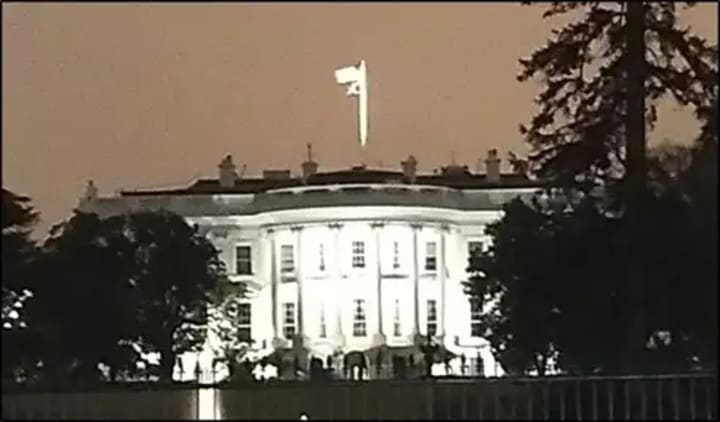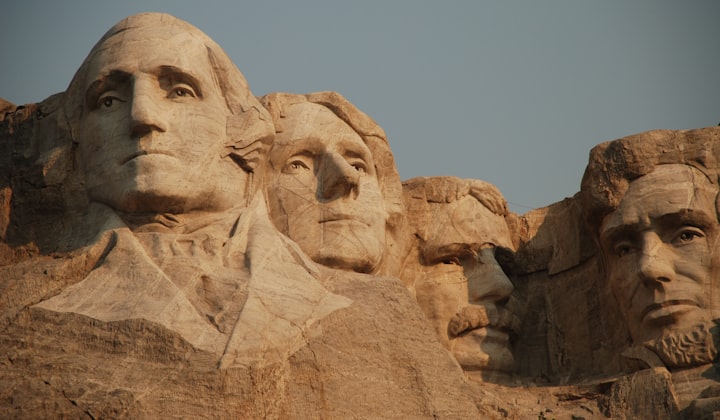
» KEY POINTS
- Issues with the Electoral College started to come to a head all the way back in 1796, the 3rd Presidential election and the first after George Washington.
- The Electoral College was created as a compromise to get more States to sign off on the Constitution and not because it is particularly beneficial or fair.
- It is very straightforward: all people of the United States — whether they live in the States or Territories — should vote for the President and Vice President directly.

In the third Presidential election in 1796, something went wrong. Attempting to remedy the situation with an extra-Constitutional solution, the 1800 election showed the problems persisted and were exacerbated. The trouble was the method by which the Constitution had laid out how the President and Vice President were to be elected.
Thus in 1804 — in time for the next Presidential election — the 12th Amendment was passed to fix the major flaws written into the original Constitution. Mind you, the Constitution had just come into effect in 1789; as such a mere 15 years after that point it already was showing cracks around its core components. What we are talking about here in Article 2, Section 1, Clauses 2 through 4 (as well as relevant Amendments) is the Electoral College, which is charged with electing the President and Vice President of the United States.

Let us not beat around the bush here...
The Electoral College is horribly undemocratic and the antithesis to reflecting the will of the people in choosing their government and leaders.
At the time of the writing of the Constitution, the Electoral College was considered a “fairish” compromise between those that wanted a direct vote and those that wanted Congress to decide who should be President and Vice President. If the latter had won, the United States would have a system similar to many Parliamentary Democracies with Prime Ministers in which the Head of State is actually part of the legislature and there is no check between those creating and those executing the law.
The compromise consisted of each State getting Electors in the college equal to the total number of people they have in Congress. In turn, the States could then decide how their Electors voted — at least theoretically. During the first Presidential election, only 6 of 13 States even used some form of direct vote by the people to decide what the Electors did. That number decreased to 5 of 16 in the 1800 election, but it did otherwise rise so that by 1868 all States did some type of direct voting. As of the 2020s, all States save Nebraska and Maine grant the winner within their State all their Electors while the latter two have created districts to decide how each vote should go.
Mind you, nothing is illegal or un-Constitutional about taking any approach to how Electors should vote. Nor is there anything illegal or un-Constitutional for Electors to go rogue and do whatever they want. Some States have laws to address this, but otherwise Electors can be “faithless” — break their pledges to how the States say their votes should go. And if you think this is a rare occurrence, there have been 167 times that Electors have gone off script as of 2016.
The 2016 Presidential Election saw the following:
- President
- — — 3 votes for Colin Powel (did not run)
- — — 1 vote for Bernie Sanders (lost Democratic Primary)
- — — 1 vote for John Kasich (lost Republican Primary)
- — — 1 vote for Faith Spotted Eagle (who became the first Native American to receive an Electoral vote because of this, much to her surprise)
- Vice President
- — — 2 votes for Elizabeth Warren (did not run)
- — — 1 vote each for Carly Fiorina, Maria Cantwell, Susan Collins, and Winona LaDuke (all who did not run)
- — — Three additional faithless Electors were attempted but they had their votes revoked
While this was the most faithless Electors in recent history, it is hardy a new thing. Sometimes, it is as simple as not casting a vote or misspelling the name of a candidate or reversing the President and Vice President. For the most part, Electors are appointed political positions to give favor to Party-loyalists. A few States allow an election of their Electors, but in reality they are held accountable to no one and are appointed by the States’ legislatures to people of clout.
On July 6, 2020, the Supreme Court made a surprisingly unanimous decision that laws restricting Faithless Electors are Constitutional. That said, at the time of the ruling only 14 States had a mechanism to change the vote of a Faithless Elector to the one that was expected. Another 19 States said that Electors should not be faithless, but had no enforcement mechanism (save 3 with a small fine) and no way to replace the vote. The remainder (17) had no laws at all. In other words, without State laws to force the expected vote, Faithless Electors could still go rogue and pick the next President against the will of the people and it would be 100% Constitutional.
As time has gone on, the flaws have continued to show themselves. All the way back in 1824 Andrew Jackson won the popular vote with 41.4% to John Quincy Adam’s 30.9%. However, in the end Quincy Adams won the runoff in House of Representatives after 4th place Henry Clay threw his support behind Quincy Adams (and in turn became his Secretary of State). However, this is not the best example because popular voting had not extended to all States yet. At that time, 6 States had no vote at all and another 12 had restrictions on candidates so that they did not even appear on the ticket.
The election of 1876 is a better example because it was after all States had direct voting within their borders and the vote-getter Samuel Tilden (50.9%) lost to Rutherford B. Hayes (47.9%). This happened again in 1888, 2000, and 2016. In the meantime, in 1961 the 23rd Amendment was passed to give Washington, D.C. the number of electors it would have as if it were a State. However, this just further proves how off this system is because the Amendment was passed so that those not living in a State would have a say in the Presidential outcome from which they were directly impacted.
By 2018, there were approximately 702,000 people living in Washington, D.C. to whom these three Electors were given. Meanwhile, the 3.6 million people living in the Territories (including 3.2 million in Puerto Rico alone) had no say at all in who could be President. All the 23rd Amendment does is further lay bare the inequities of people depending upon where they live.
Going back to the “winner take all” system of the majority of the States, there is a further suppression. If you live in a State that is going to have all your Electors go to a Party you do not support (or one you wholeheartedly support) and the voting patterns make it unlikely your vote will make an impact, then you are more likely not to show up to vote. This is reflected clearly in the numbers when looking at voting age population (VAP) versus ballots cast (not looking at voter eligible population as that would exclude people who could vote in other States or in later election, like former convicts in Florida).
The United States in total had a VAP turnout percentage of 54.7% for the 2016 presidential election. However, if you look at the so-called 14 “battleground states” versus all others, there is a difference of 59.8% to 52.2%. If we exclude Arizona and Nevada from the “battleground” list because they were until the 2016 election seen as solidly single-Party, the numbers change to 60.9% versus 52.1%, respectively. These numbers do not lie; in States where voters are told they matter more and their vote has an impact, they show up more often than those in States that are not competitive. Among the non-competitive States, Hawaii bottomed out with a 38.3% rate and Minnesota topped out with 69.4%. Within the battleground States, Florida bottomed out with 56.9% and Maine topped out with 69.4%. Just to go one step further, 18 of the non-competitive States were at or below the national average with 10 of them having turnout rates below 50%. Among the battleground states, no State had a turnout below the national average. The bottom line is: if people do not feel their vote matters, then they do not vote.
And that is what makes popular vote not even a good measure. We do not know what the people who did not vote would have done. We can make assumptions, we can do projections, but none are real until we can get more people involved in the voting process. We will return to that point later, but for now we need to completely end the Electoral College for the undemocratic process that it is. Just knowing that its very existence automatically excludes 3.6 million people from having a voice and potentially discourages another 113 million from voting should be enough to prove that this system is as broken today as it was in 1800.
Support of the Electoral College can only be given for self-serving or traditionalist reasons. If someone says that certain areas like cities will have too much influence (but for some reason it is okay for a handful of low population battleground States to have too much influence), they are simply lying because the easy math does not support it.
- Around 17% of the population live in the top 100 cities versus 20% for all rural areas.
- The top 5 cities are 6% of the population, top 20 are 10%, and the top 50 are 15%. From there, the numbers just slowly creep up.
- Even if you look at metro areas (cities themselves, surrounding areas, and other nearby smaller cities), the numbers do not come close. The metro area of New York City is still less than 20 million people, or 6% of the population. The top 5 metro areas are 17%, top 10 are 26%, and top 50 are 55%. And lest we forget that many metro areas will include rural areas because they are close enough to the cities to be included.
- For over 30 years, 38 States have voted for the same Political Party anyway (although as noted, a couple of those States are likely changing). This has resulted in a starting point where Democrats have 242 Electoral College Votes to 102 for Republicans. More importantly, since it takes just 270 to win the election, Democrats would only need 28 more and could concentrate their efforts on just the most likely ways to get there.
The bottom line is that no one area or type of area can dominate others under a straight election, despite what fear mongers have to say about it. Contrary to this, the Electoral College has allowed this exact situation to happen. More importantly, though, is that we must always remember the foundation of this argument is that the Constitution is flawed because fallible people wrote it and made compromises just to get 9 of 13 former colonies to agree to it. We have dealt with the impact for hundreds of years and know that in order to have a just process and engage the citizenry there must be massive changes. Therefore, let us make some:
By Amendment to the Constitution of the United States, Article 2, Section 1, Clause 2 shall be merged with Article/Amendment 23, Clause 1 and 2 and together shall read:
Each State shall appoint, in such Manner as the Legislature thereof may direct, a Number of Electors, equal to the whole Number of Senators and Representatives to which the State may be entitled in the Congress: but no Senator or Representative, or Person holding an Office of Trust or Profit under the United States, shall be appointed an Elector.
The District constituting the seat of government of the United States shall appoint in such manner as the Congress may direct: A number of electors of President and Vice President equal to the whole number of Senators and Representatives in Congress to which the District would be entitled if it were a state, but in no event more than the least populous state; they shall be in addition to those appointed by the states, but they shall be considered, for the purposes of the election of President and Vice President, to be electors appointed by a state; and they shall meet in the District and perform such duties as provided by the twelfth article of amendment.
The Congress shall have power to enforce this article by appropriate legislation.
The President and Vice President of the United States shall be directly elected by the people of all States and Territories here within.
There it is! That is it! The Constitution does not have to be complicated, but a single sentence saying all people have a say in selecting the President and Vice President. The method by which to elect them, though, is a different story entirely.

The above piece is a mildly modified excerpt from New & Improved: The United States of America by J.P. Prag, available at booksellers worldwide.

Learn more about author J.P. Prag at www.jpprag.com.

An earlier version of this article appeared on Medium.
About the Creator
J.P. Prag
J.P. Prag is the author of "Aestas ¤ The Yellow Balloon", "Compendium of Humanity's End", "254 Days to Impeachment", "Always Divided, Never United", "New & Improved: The United States of America", and more! Learn more at www.jpprag.com.






Comments
There are no comments for this story
Be the first to respond and start the conversation.